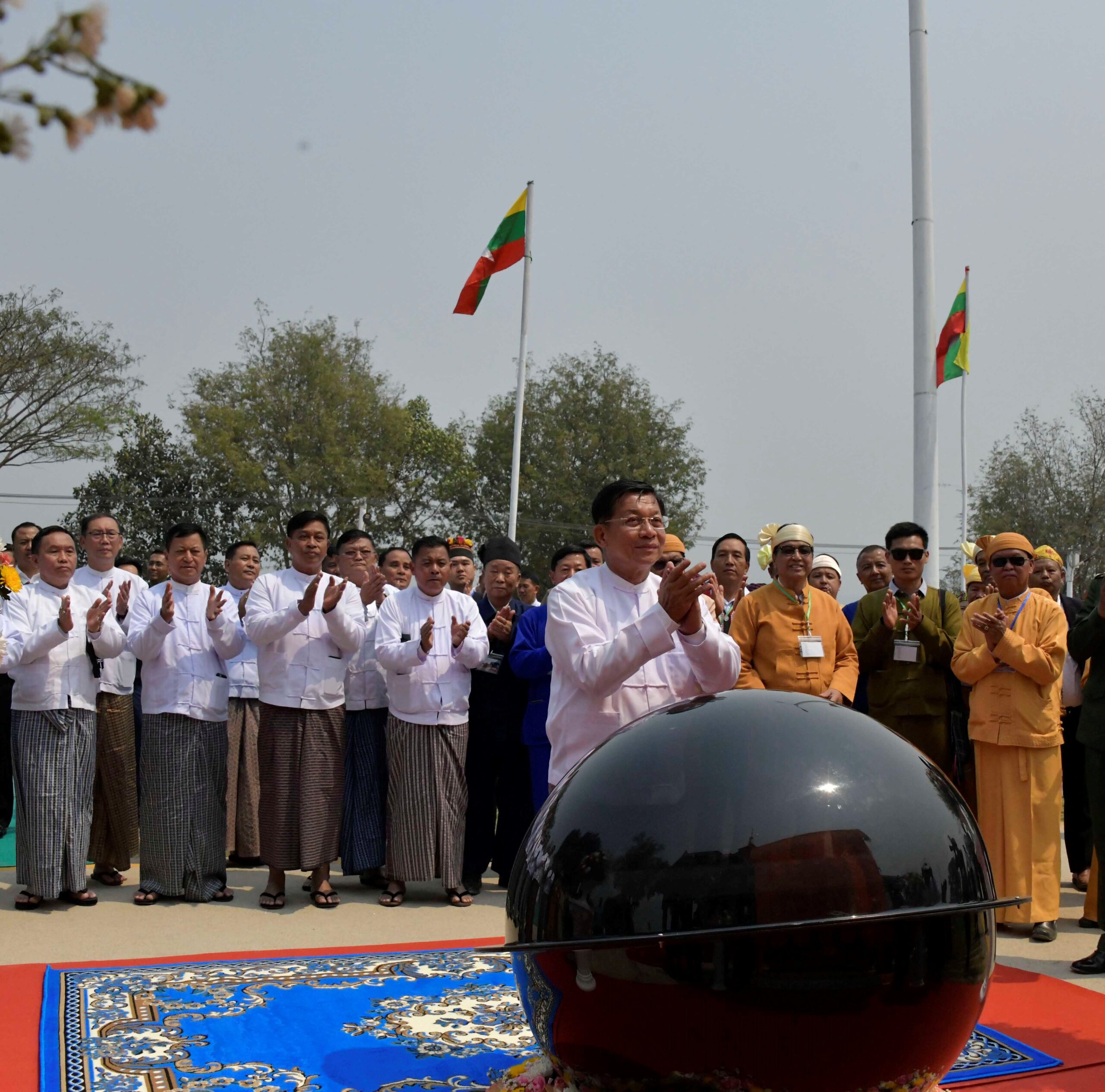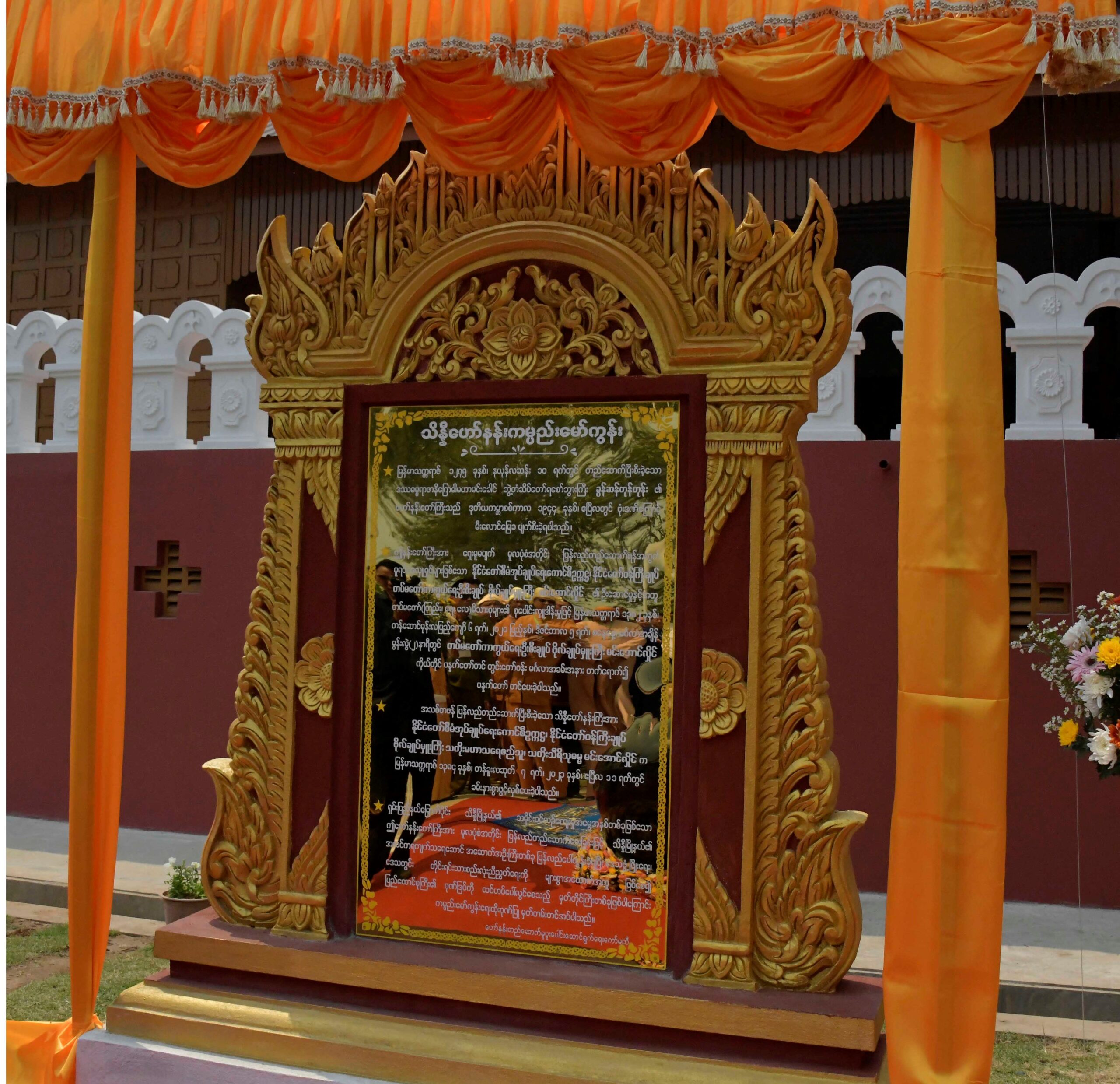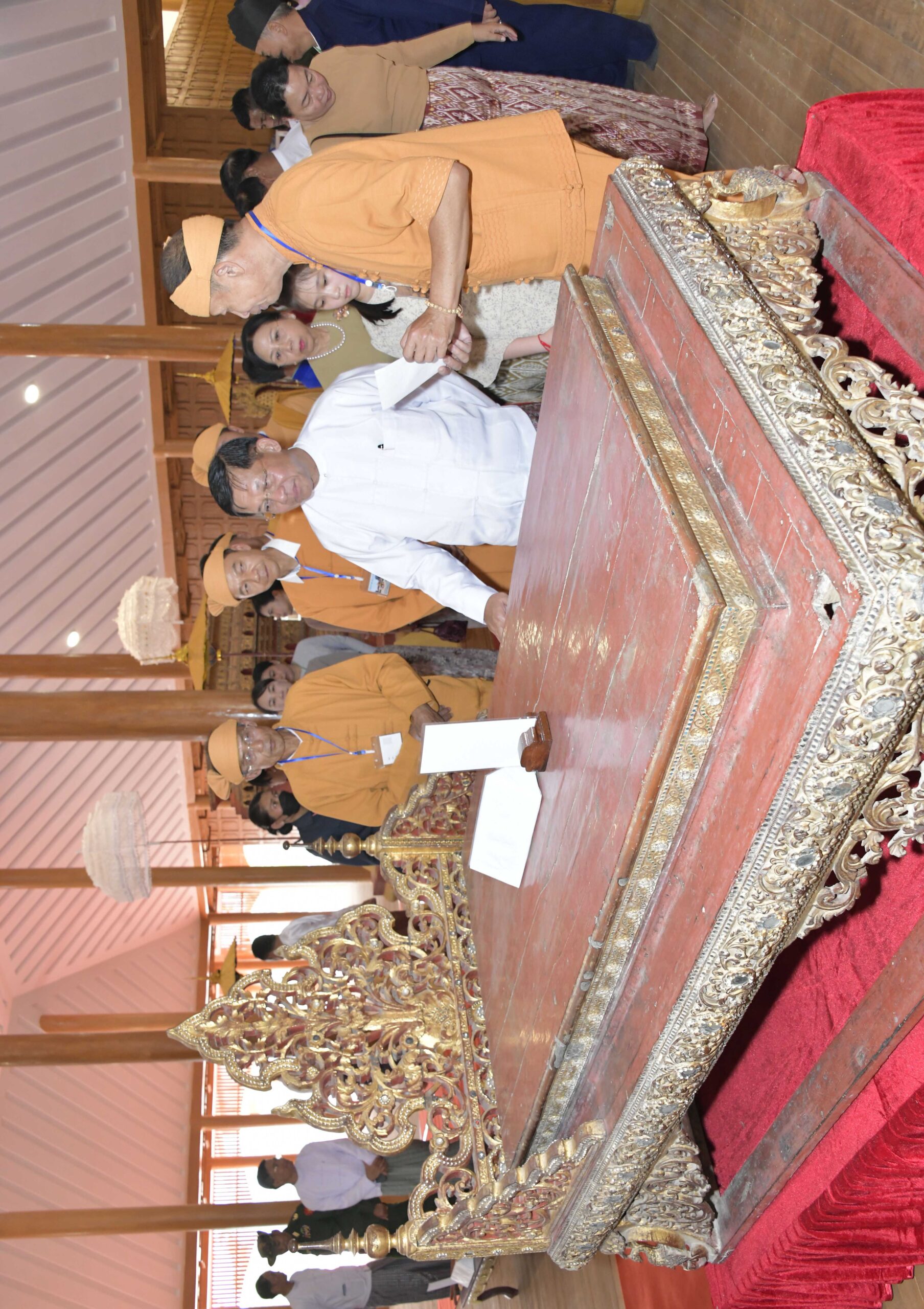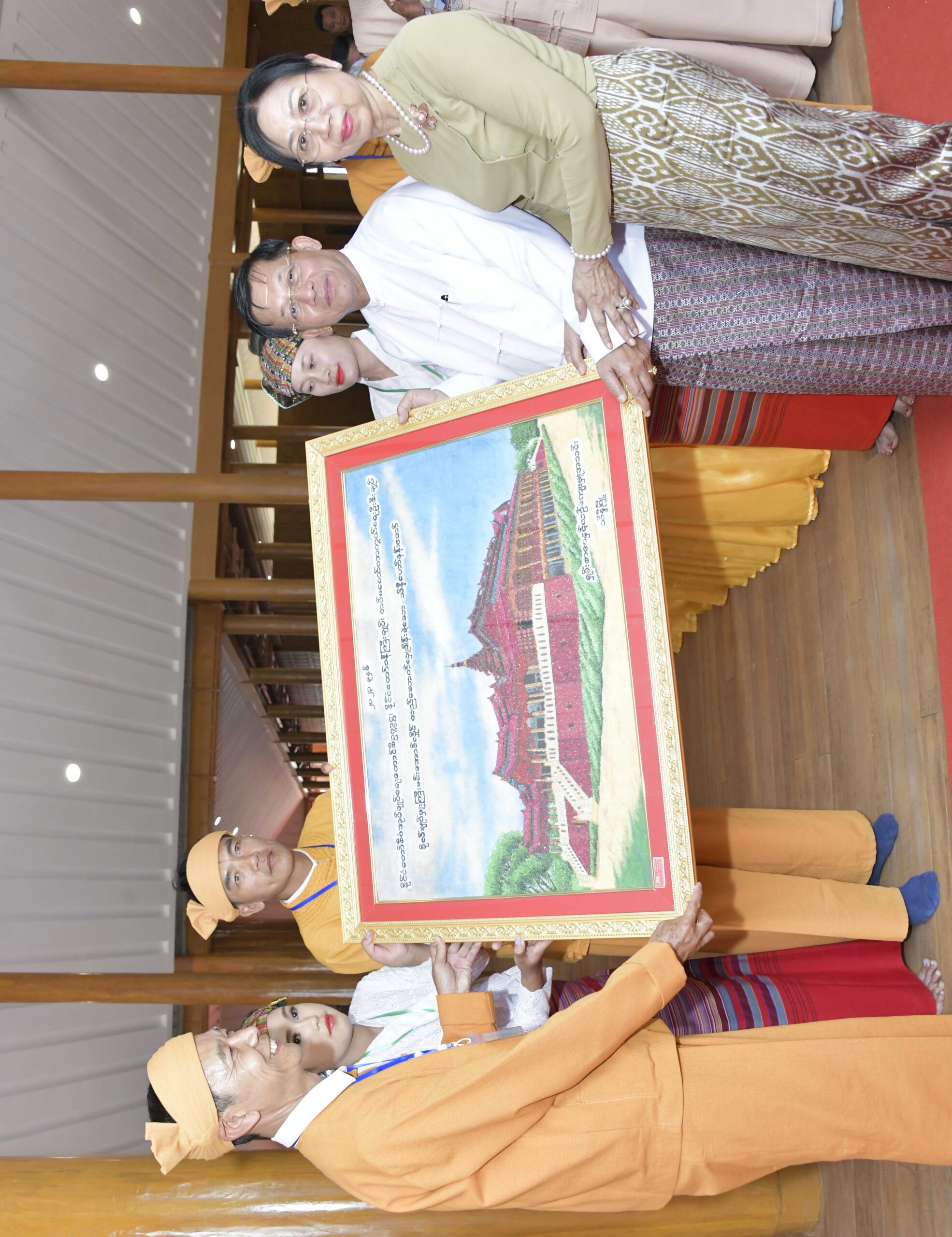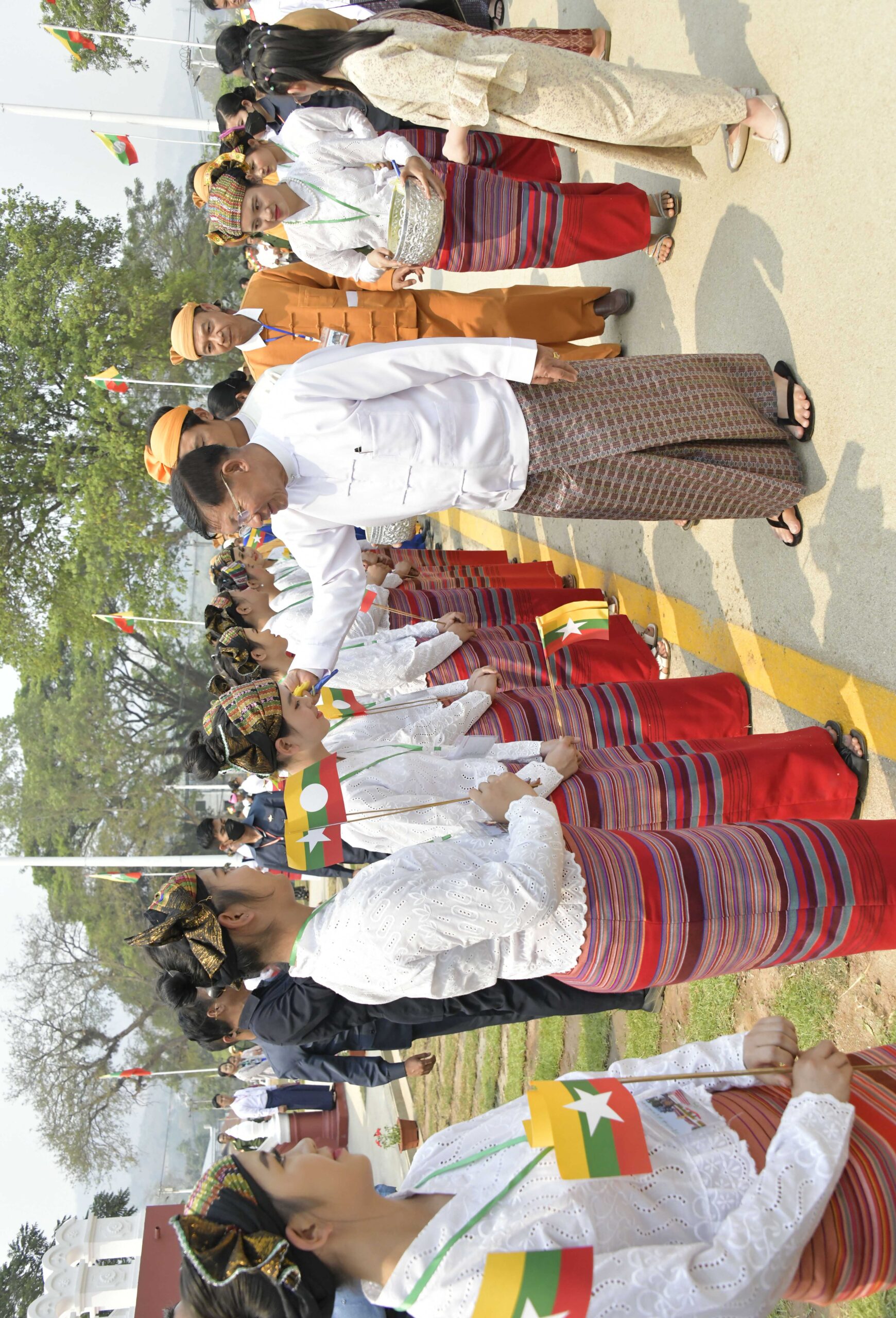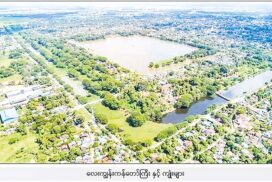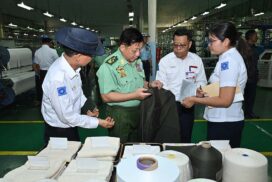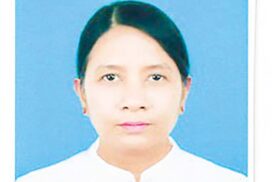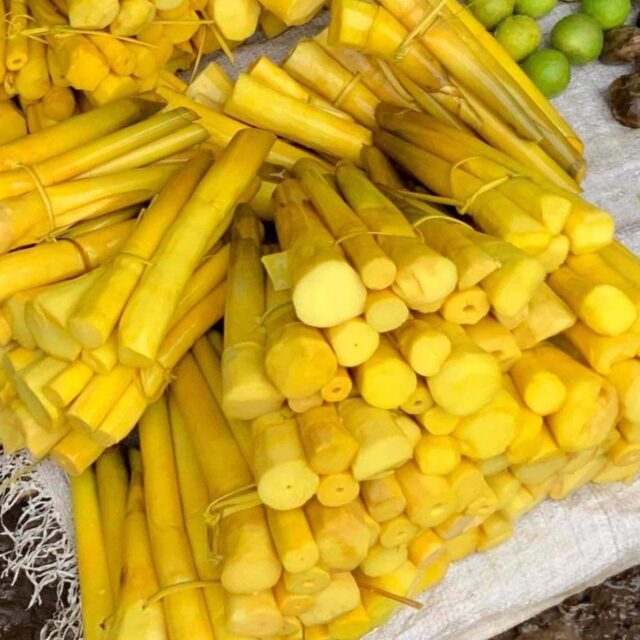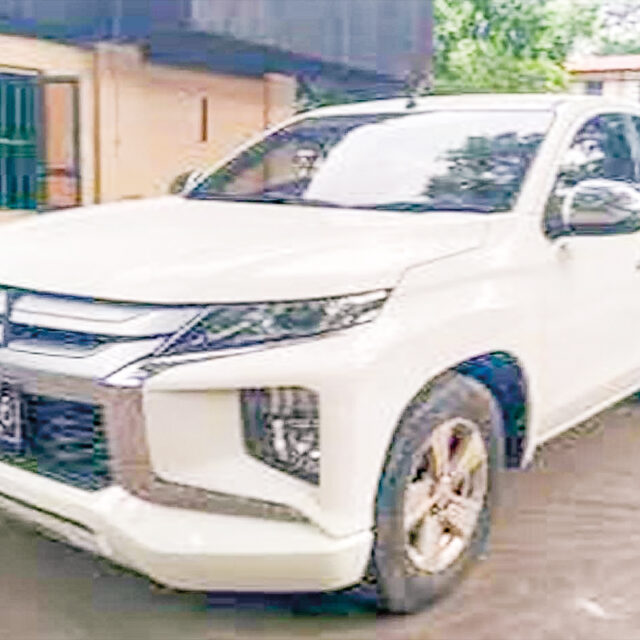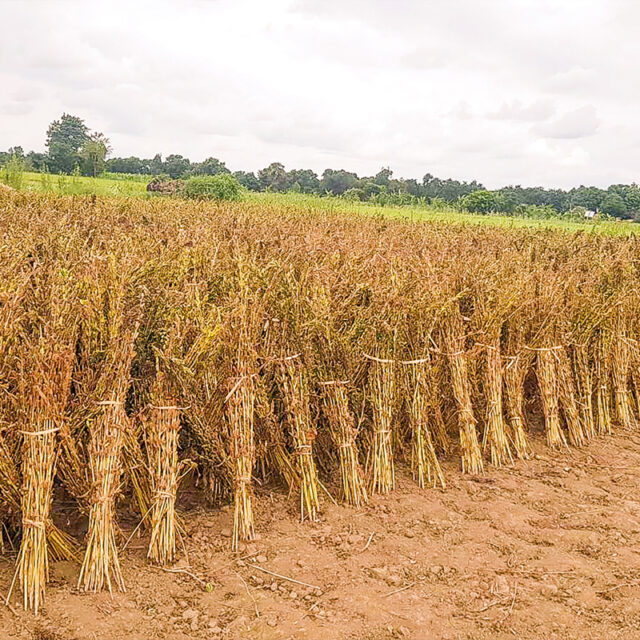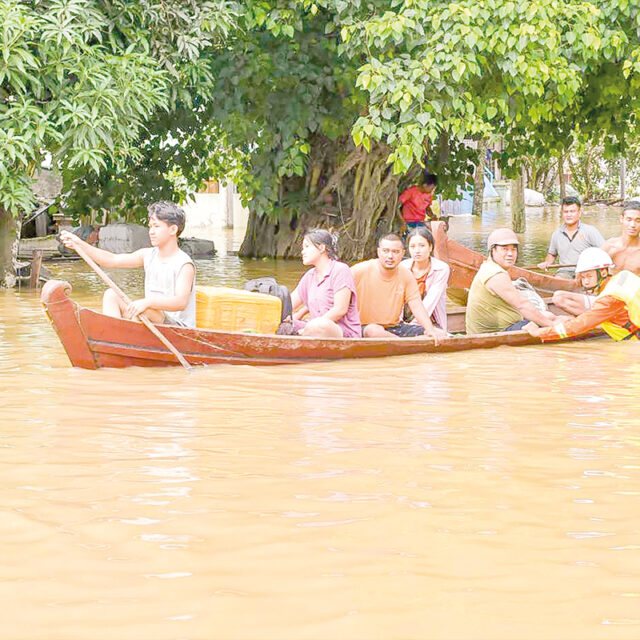As part of a historical building and symbol of national unity in the Hsenwi region, the Saopha palace was renovated by the government and Tatmadaw for fulfilling the wish of the local people, said Chairman of the State Administration Council Prime Minister Senior General Min Aung Hlaing at the inauguration ceremony of Saopha Palace of Hsenwi Saopha Hkun Hsang Tone Hung as the Hsenwi Saopha Palace cultural museum yesterday morning.
Speaking on the occasion, the Senior General said that history cannot be destroyed and it is necessary to take lessons from the past to initiate a better system for the nation. The Senior General expressed his concept that the history of Saophas should be exposed and maintained. Hence, the Saopha palace was rebuilt by the government and Tatmadaw without losing original works as a symbol of national unity. Likewise, the Mongpun Saopha Palace is being renovated whereas arrangements are being made to rebuild the Kengtung Saopha Palace. These buildings are expected to attract local and foreign travellers for the development of the regions.
Sao Hom Hpa, son of North Hsenwi Saopha Hkun Hsang Tone Hung, served military and civil duties to benefit the Union. He signed the Panglong Agreement on 12 February 1947. He reoccupied Lashio from White Yebaw troops and Red Communist troops and handed it over to the government in March 1948. He served as Magway District Deputy Commissioner and Major at No 14th Battalion, Burma Rifle. Hence, the Thadoe Maha Thray Sithu title was conferred to the Saopha on the Independence Day of 1949.
As part of a historical building and symbol of national unity in the Hsenwi region, the Saopha palace was renovated by the government and Tatmadaw to fulfilling the wish of the local people. The Senior General expressed his pleasure in hearing the news that the Saopha palace will be turned into the historical museum for public observation.
Thanks for rebuilding the Hsenwi Saopha palace
Town elder U Sai Myo Nyunt, chair of the Saopha Palace reconstruction cooperation committee, spoke words of thanks for the reconstruction of the Saopha Palace.
SAC member Dr Kyaw Tun, Shan State Chief Minister U Aung Zaw Aye, Quartermaster-General Lt-Gen Kyaw Swa Lin, Commander of North-East Command Maj-Gen Naing Naing Oo, Hsenwi Township Shan Literature and Culture Committee Chairman U Sai Myint Tun and town elders cut the ribbon to open the Saopha palace cultural museum.
The Senior General unveiled the plaque of the building and sprinkled scented water on it.
The Senior General paid homage to the ancient Buddha images worshipped by successive Hsenwi Saophas in the museum and viewed round ancient cultural heritage, utensils of successive Saophas, documentary photos and construction records and left necessary instructions to officials.
An official of the Shan Literature and Culture Association presented a picture and domestic products as gifts in commemoration of the opening ceremony to the Senior General, who returned the gifts.
After the ceremony, the Senior General and wife and party doused Thingyan water on departmental officials, people’s militia troops and local people.
Hsenwi Saopha Palace was built as a replica of Mandalay Palace by North Dassadhammaraja Nijodha Maha Minkhaung Hkun Hsang Tone Hung in 1910. Suffering from a stroke, the Saopha passed away at 1 am on the 2nd waxing of Tagu, 1277 ME, 1916 AD. Japan occupied Hsenwi in 1940. US aircraft bombed the Hsenwi-Namtu bridge and Hsenwi town in 1944, leaving large damage. The historical Saopha palace of Saopha Hkun Hsang Tone Hung also collapsed. In accord with the guidance of the Senior General, the Saopha Palace construction started on 5 December 2019, and the new one is 63 feet left from the old one. Today, the Saopha Palace cultural museum was successfully opened with the attendance of the local people. — MNA/TTA


